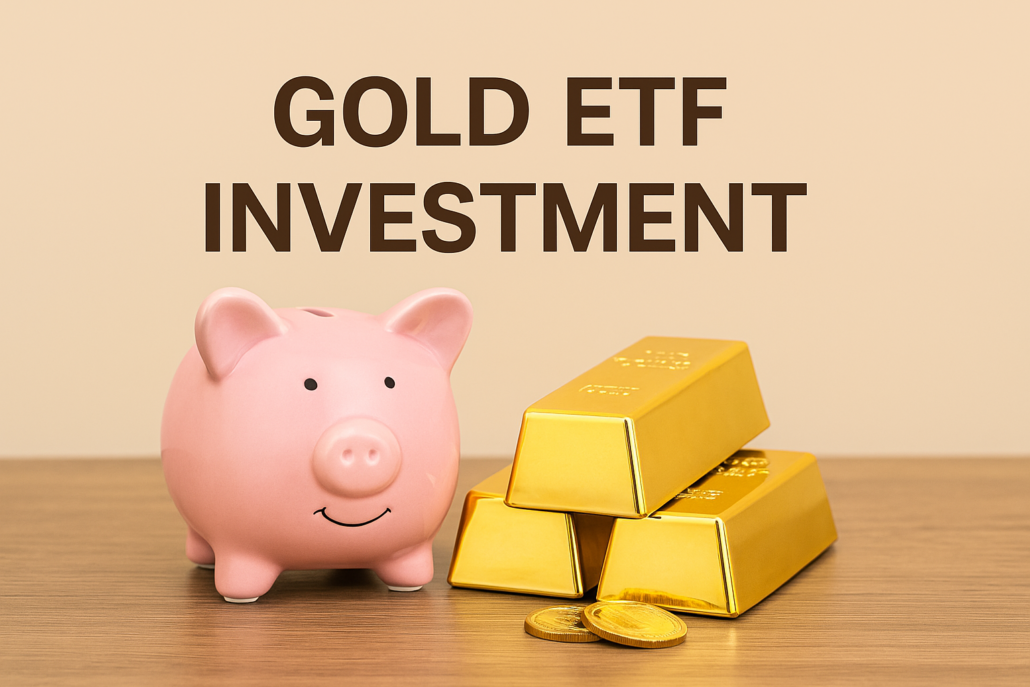What makes gold so special for Indian investors?
In every middle-class home, gold is more than just metal—it’s security, pride, and tradition. But what if you could invest in gold without buying jewellery or worrying about locker safety? That’s where Gold ETF investment becomes a modern middle-class solution.
What is a Gold ETF actually?
A Gold ETF (Exchange-Traded Fund) is a mutual fund that invests in physical gold and tracks its price. But instead of holding actual gold, you hold units of it in your demat account—easy, safe, and transparent. It’s like buying gold through the stock market.
Why should I trust Gold ETF investment over jewellery?
Because you don’t pay making charges or face purity issues. You skip the tension of storing it at home or paying for lockers. With Gold ETF investment, you get 99.5% purity-backed gold, regulated by SEBI, and easily sellable on any market day.
How do I begin Gold ETF investment?
Simple steps. Open a demat and trading account with platforms like Groww, Zerodha, or Upstox. Search for a trusted Gold ETF like Nippon or HDFC Gold ETF. Place a buy order based on how much you want to invest. That’s it—your units will reflect in your demat.
Can I invest small amounts regularly?
Absolutely! You can even start SIPs in Gold ETF investment if your broker supports it. Monthly SIPs of ₹500–₹1,000 help you slowly build a gold reserve digitally—without ever stepping into a jewellery shop.
What are the hidden costs I should know?
There’s no hidden drama. The Gold ETF investment charges are transparent. An expense ratio of 0.25%–1% goes to the fund house. Brokers may charge a flat ₹20 per trade. Demat AMC (Annual Maintenance Charge) is ₹300–₹500 yearly. No entry or exit load in most cases.
Will I lose money if I sell too soon?
Only in short-term volatility. But if you sell within 3 years, you pay short-term capital gains tax (as per your income tax slab). If you hold longer, it becomes long-term capital gains—taxed at 20% with indexation benefit. That’s tax-efficient compared to physical gold.
What happens to my units if gold prices crash?
Just like stocks, the value of your Gold ETF units may fall if gold prices drop. But gold usually provides stability during economic crisis or inflation. So, Gold ETF investment acts as a hedge against uncertainty.
Can I sell my Gold ETF anytime I want?
Yes. That’s the beauty of it. Unlike jewellery which you may sell only at select shops, Gold ETF investment is liquid. Sell it anytime during trading hours at real-time prices—just like a stock.
Who should consider Gold ETF investment?
Middle-class families looking for safe, long-term investment. Young professionals planning for future goals. Retired individuals wanting low-risk assets. Basically, anyone who wants gold without its hassles.
How safe is my money in a Gold ETF?
Your investment is backed by physical gold held by the fund house. It’s regulated by SEBI. There’s no theft risk, no purity doubt, no black market value cut. Your Gold ETF investment stays in your demat like any share—safe and sound.
What’s the difference between Sovereign Gold Bonds and Gold ETF?
Gold ETFs are market-linked, highly liquid, and perfect for trading or SIP. SGBs are government-backed with fixed 2.5% interest but locked in for 8 years. Choose Gold ETF investment for flexibility; SGB if you can commit for long.
Final thought: Is Gold ETF investment truly worth it?
If you believe in gold, and want it in a smart, digital, tax-friendly, flexible form—then yes. Gold ETF investment is one of the smartest ways to preserve wealth without worry. You don’t just invest in gold, you invest in peace of mind.
![]()



